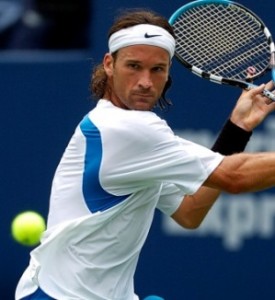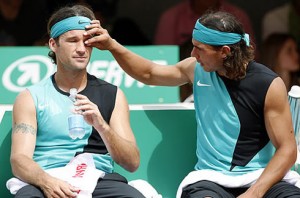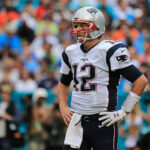The Glory and Struggles of Carlos Moya
Somewhere in his memory it will always be January 1997, and he’ll be playing a hard-serving German on a slow, hard Australian court. The tall, hard-serving German named Becker is going into this first-round match at the year’s first major as defending champion, and considered a heavy favorite against the Spaniard with the heavy topspin forehand.
Unfortunately for the German, the 20-year-old Spaniard named Carlos Moya is almost the same height, has a big serve of his own and, yes, a heavy topspin forehand, accentuated with graceful, fleet-footed court coverage. On this day the news will be that six-time Slam winner Boris Becker has become the first defending champion of the AO to lose in round one–a result that may motivate him, six months later, to decide that he’s done playing in the Slams.
What wasn’t known at the time was that the result will spark a run for the Majorcan, carrying him all the way to the finals, crushing Michael Chang in the semis and setting up an appointment with Pete Sampras in the final.
He won’t win the title, but in a game fragmented into clay- and hard-court specialists, Moya appears to have the game for both surfaces.
Somewhere else in his mind, it’ll always be Paris. Just a year and a half after he announced his presence in Australia, he used Roland Garros to show what that presence meant.
Here in the late ’90s there are many Spaniards, from Albert Costa to Felix Mantilla to Alex Corretja, all of whom have similar heavy forehands and good wheels, making them a nightmare assignment on the dirt. For two weeks in 1998, Moya looks like the future of Spanish tennis. Using his big first serve, flat backhand, and, of course, that big forehand to overpower Mantilla in the semis and then oust Corretja in the final.
When Corretja’s final backhand finds the net, the 21-year-old falls to the dirt, and before he can stand Corretja is there to greet him with an embrace, congratulating him and wishing him a successful future. Moya joins the elder statesman Sergi Bruguera as the only active Spaniard with a Slam to his name, and now has a shot at being No. 1 in the world.
In December 2004 , Moya is no longer the future, but is clinging tightly to the present. Not long after a very brief stint as No. 1 in the world in early 1999, he suffers through a series of injuries, most notably a stress fracture in his back that greatly limits his play around the turn of the century.
By the time he returns to action, he’s no longer even the dominant man from his own country, as Juan Carlo Ferrero quickly adapts to Parisian clay, winning in 2002. By 2004, expectations are lower, but Moya is carving out a nice career for himself; not every guy on tour can say they’ve won a major and been No. 1, after all.
It’s also not every player who wins three Masters Shields and leads his country to Davis Cup glory. On day one of the DC finals against the United States, he watches his teammate–a youth named Rafael that he remembers hitting with when the kid was just a junior and Moya an established pro–outlast Andy Roddick.
On day three he finishes the job, beating Roddick in straights to clinch his country’s second Cup win ever. With his time at No. 1 and his RG title, he’s now completed a rare trifecta.
In spring 2007 the player who was once among the game’s best is clearly no longer its top Spaniard. The 30-year-old Moya has surprised a few by reaching the quarters in Paris, but when he faces that kid named Rafa he used to practice with, it’s clear that he no longer has the best forehand in Majorca, nor is he even the fastest Majorcan player or the one with the most imposing biceps.
The kid named Rafa, who played doubles with Moya for much of the summer, is on his way to becoming one of history’s best. Wearing identical green-and-black shirts sans sleeves, the first couple of sets he reminds that he’s pretty good in his own right, but in the third his aging legs can take no more.
This time its Moya embracing his compatriot at the net, congratulating him. And probably hoping the younger man enjoys his best days while they last.
May 2010 is not one of the more joyous times in his career, but by now he’s happy just to be playing.
He faces another hard-serving German named Becker, this time on a rather quick clay court in his native land.
The second most famous German player named Becker to ever play tennis shouldn’t be the most intimidating of clay court opposition, but a decade and a half as a pro tennis player left Moya with a series of injuries in much of the previous season, and robbed him of his inspiring ability to glide across the dirt.
He surrenders the first set at love and musters only two in the second. Post-match, he’s not exactly sharing secrets when he says its one of the worst beatings of his career. The previous year was virtually a wash because of his tendons and hip, and he’s won just two matches in five tournaments this season.
Benjamin Becker–famous for little aside from his name and winning the last match Andre Agassi ever played–will not console Moya by going on a tear in Madrid; in fact he won’t win another match. For now, Moya just hopes his brittle body allows one more trip to Paris.
Once there, hopefully he can make one more memory in a career full of them.













